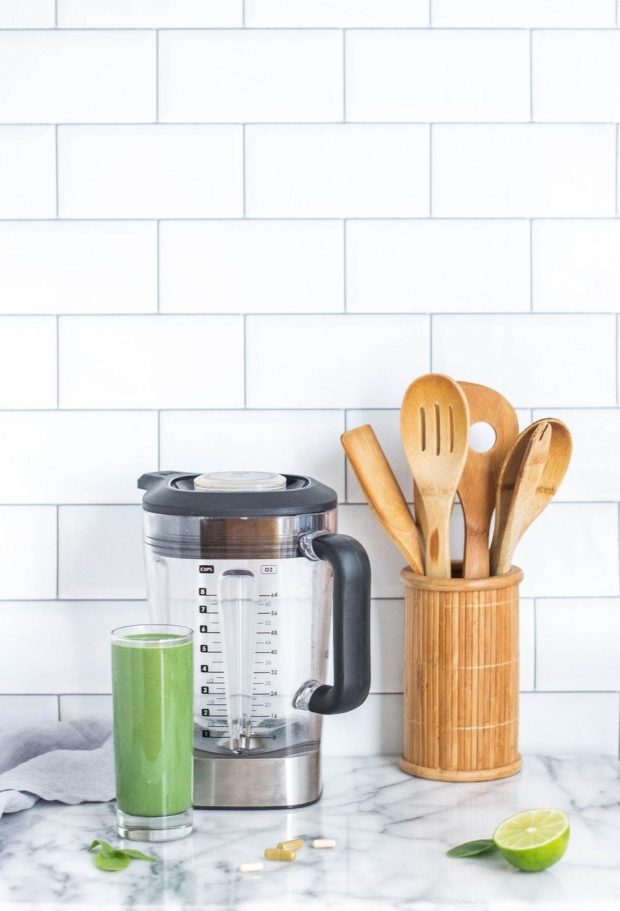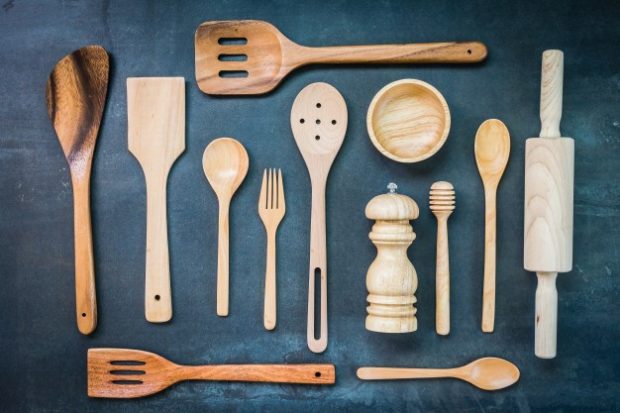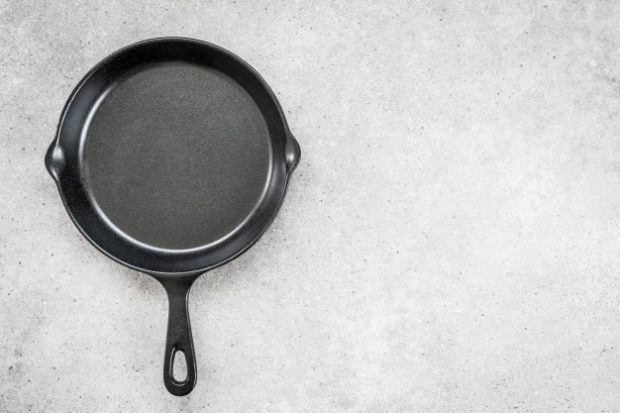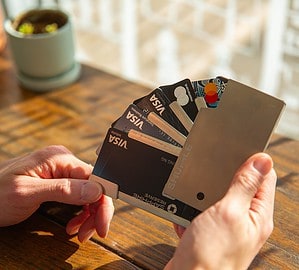Are you still using that cheap cutting board and dull knives you bought on sale a decade ago? It’s time to stock up your kitchen and update it with the following must-haves.
1. Blender

If you’re a fan of purées and soups, then you’ll need a blender. The best personal blenders are usually a bit pricier but they’re definitely worth it. If you opt for a cheaper option, you’ll probably need to buy a new one very soon.
Immersion blenders are ideal for frothing up drinks and making smoothies, but they’re also used for chopping garlic and onion. These handheld blenders are not only versatile, but they’re also inexpensive, and don’t take up too much space in your kitchen.
If you need to chop things more coarsely, opt for a food processor.
2. Pans
Cast iron pans are very durable, quite affordable, and conduct heat well. They’re ideal for cooking (or caramelizing) all types of meat, be it poultry or red meat. On the flip side, you need to be careful with cast iron pans because food easily sticks to them; that’s why you’ll need to add a lubricant or season the pan every time you use it.
When it comes to non-stick pans, you don’t need a whole set. One good-quality, non-stick pan is enough to produce lots of egg cookery, as well as tons of delicious pancakes.
However, cooking pros concur stainless steel is the best material for most cookware. Even though they’re somewhat difficult to wash and a bit heavier, stainless steel pans and pots have better heat conduction and last longer.
3. Quality Knives
When it comes to knives, you don’t need a full set (one with a great-looking wood block and all). Forget about the looks and focus on functionality. If you want to cook like a pro, you’ll need only three knives: a chef’s knife, a paring knife, and a serrated bread knife. Cooking experts also recommend opting for forged knives because they are better quality than stamped knives and more durable.
4. Knife Sharpener
If you have great knives, then you’ll need a great knife sharpener as well. By keeping your knives sharp, you’re increasing their durability. But how often do you need to sharpen your knives? That depends on what and how often you cook. For instance, if you’re using the chef’s knife every day, you should sharpen it once a week or once every 2 weeks.
Experienced chefs usually go for a sharpening stone, but if you’re a beginner, the safer option is chantry knife sharpener (the one that can stand on the counter and you only need to slide the knife through).
5. Cutting Board
Even though stone, marble, and glass cutting boards may look fancier, cooking experts agree that plastic and wood ones are more practical. Fancy cutting boards tend to dull knives and are not recommended for heavy-duty chopping. In fact, it is safe to say that they’re more for show.
When it comes to cutting boards, you need something that is hard, won’t wear out over time, or get grooves. Speaking of grooves, they lead to bacteria buildup so you should change your cutting boards every 2-3 years.
6. Pressure Cooker
When you’re strapped for time, a pressure cooker is a way to go. But you need to know how to use it. Even though they can be a bit scary, once you learn how to operate pressure cookers, they are great. You can use the pressure cooker to prepare rice in only twenty minutes (when you make rice in a standard pot, it’ll probably take you more than one hour).
7. Whisk
When choosing a whisk, opt for one made with thin wires. If you’re making emulsions like hollandaise sauce or vinaigrettes, too thick and too big wires won’t be able to emulsify them well enough.
8. Wooden Spoon
As the metal heats up and plastic melts, wooden spoons are your best choice for stirring stuff over a hot burner. Opt for a spoon with one flat side; it will come very handy when you need to scrape the bottom of your bowl or pan.

9. Rubber Spatula
A good-quality spatula has to be heat-resistant. Find one made of silicone, which can stand temperatures over 400oF, so it won’t melt in your pan.
10. Garlic Press
If you don’t want your fingers to be smelly, you need to own a garlic press. Forget about using a knife to mince the garlic; this simple yet incredible gadget will press the clove into small pieces before you know it.
11. Vegetable Peeler
You can use your vegetable peeler for much more than just peeling fresh veggies. For instance, you can use it to shave some hard cheese or chop really thin cucumber slices for your salads. For a better grip, look for the Y-shaped peelers instead of the more traditional straight ones.
12. Salad Spinner
After washing the greens, you’ll need to dry them. But very often, removing all the water from the lettuce seems impossible, regardless of how much you squeeze. To avoid soggy salads, you need to own a salad spinner.
This amazing gadget does much more than just dry your greens. You can also use it after washing herbs or even mushrooms (which is great, because they soak up lots of water).
The salad spinner comes especially handy when you need to cook eggplant and zucchini. As you know, these veggies need to be very dry before you start cooking them. It’s the same with apples before you use them in your strudels, pies, and cakes. Toss them in the spinner, give them a quick whirl, and you’re good to go.
13. Digital Thermometer
Beginner cooks simply need to have a digital thermometer. It provides instant-read when you need to cook meat to a certain level of doneness without stressing. The most practical type is probably the thermometers that have a cable probe, so when you’re roasting something, just put the thermometer into the food that is being roasted, and leave the thermometer outside. You can also set an alarm to go off when the roast reaches the desired temperature.




